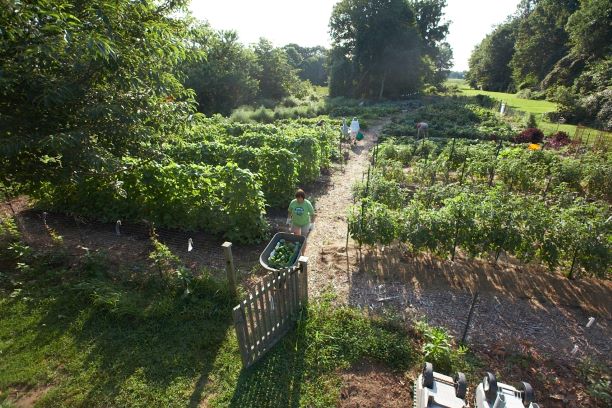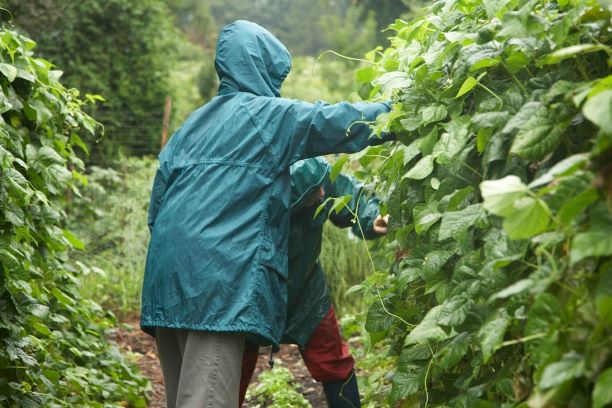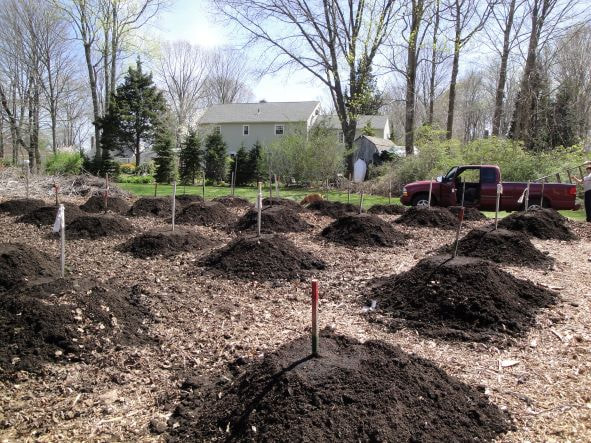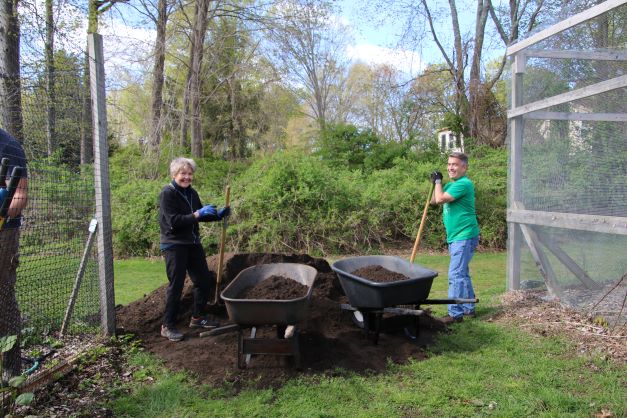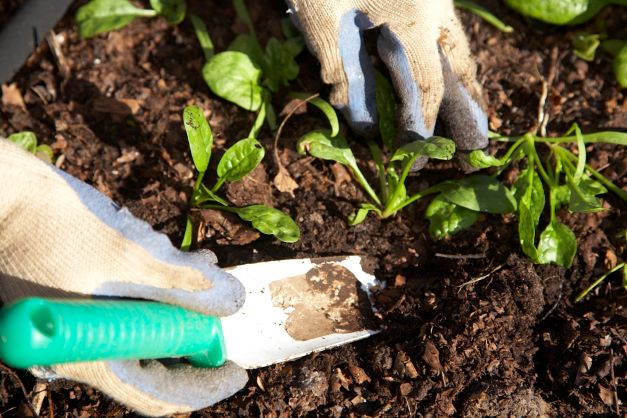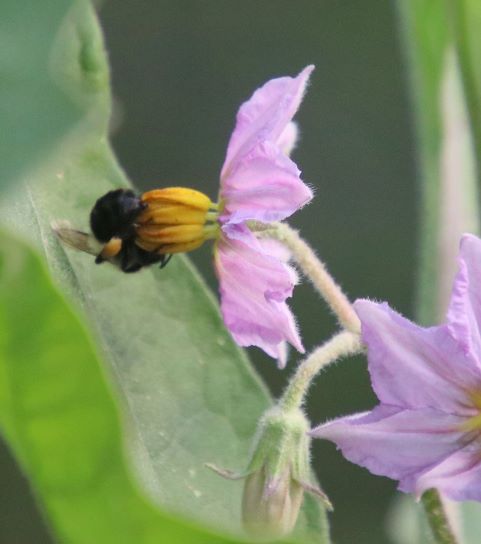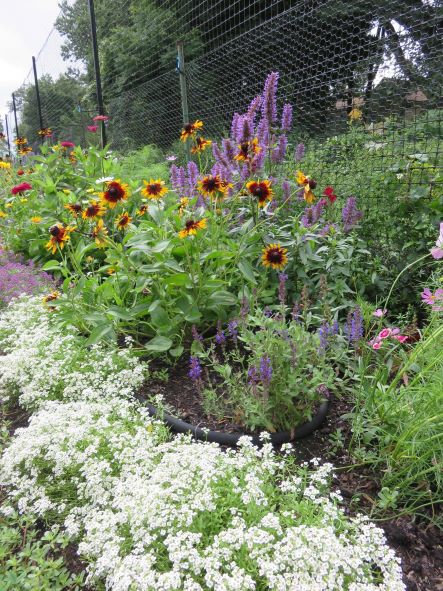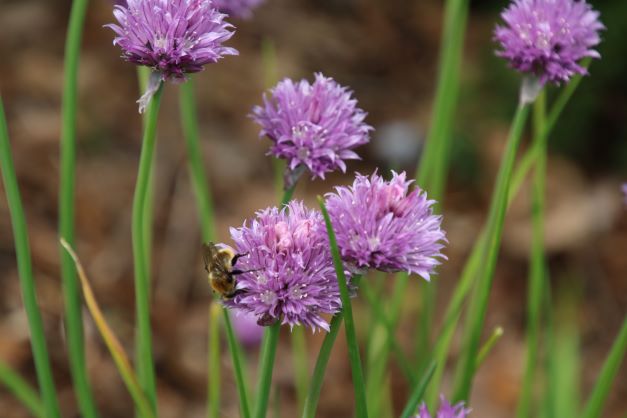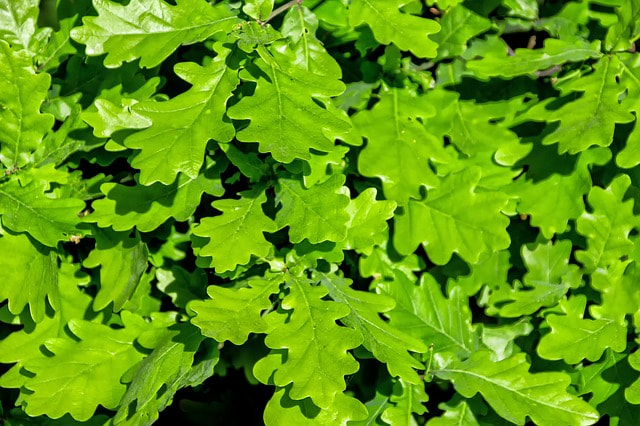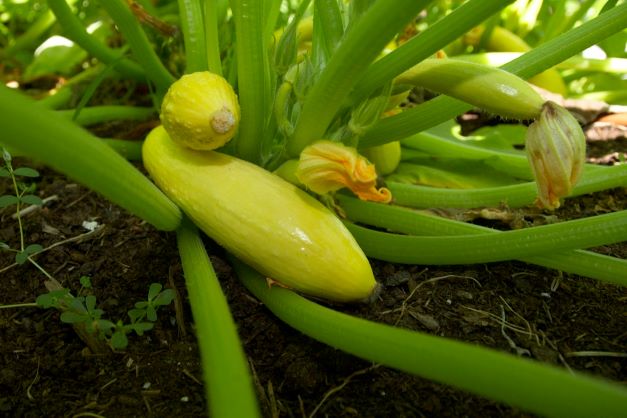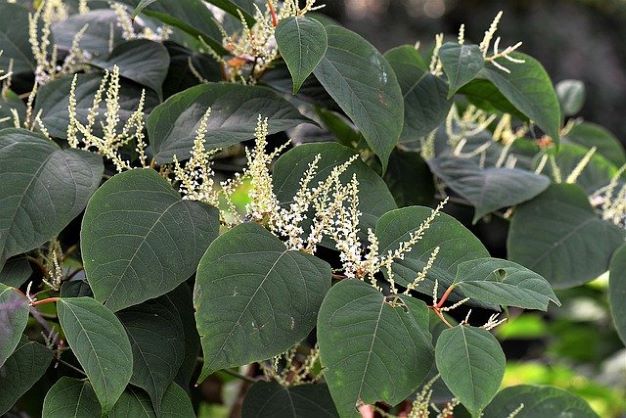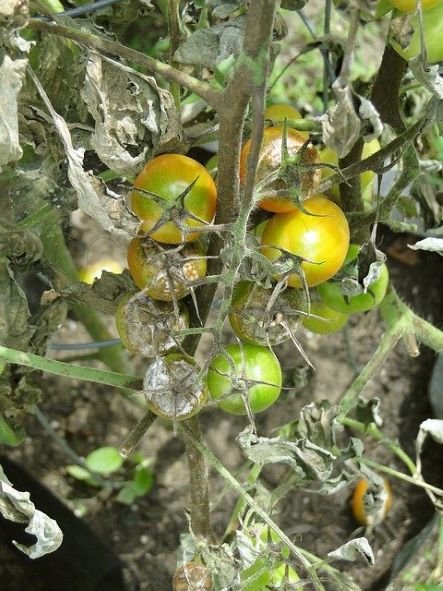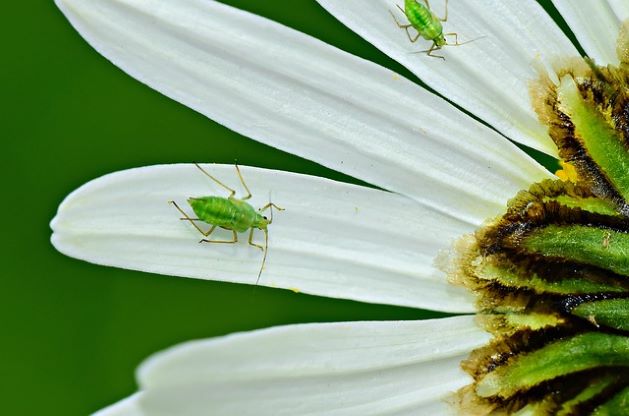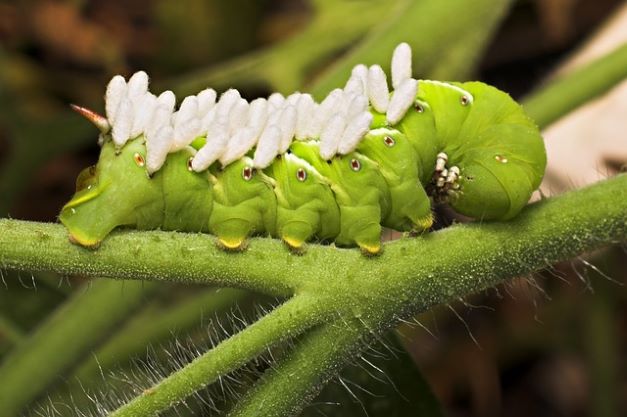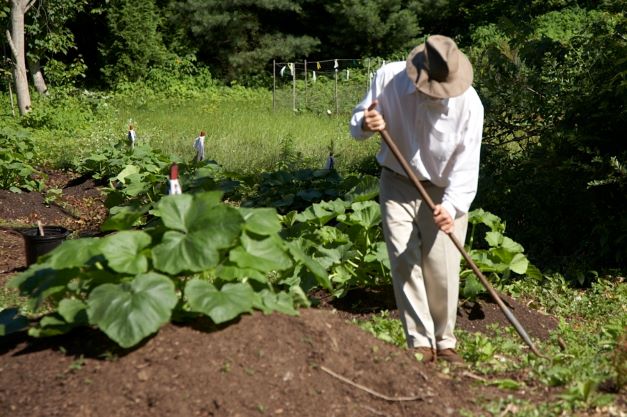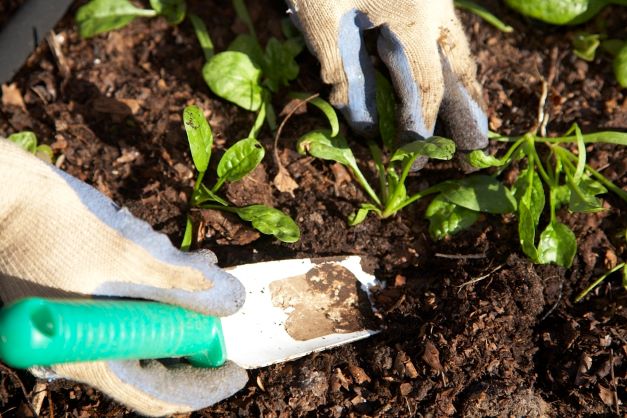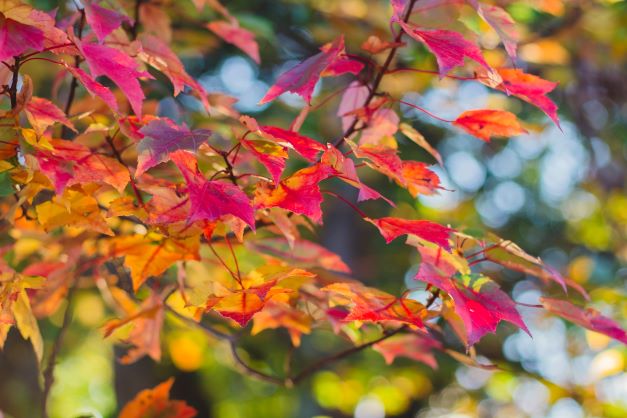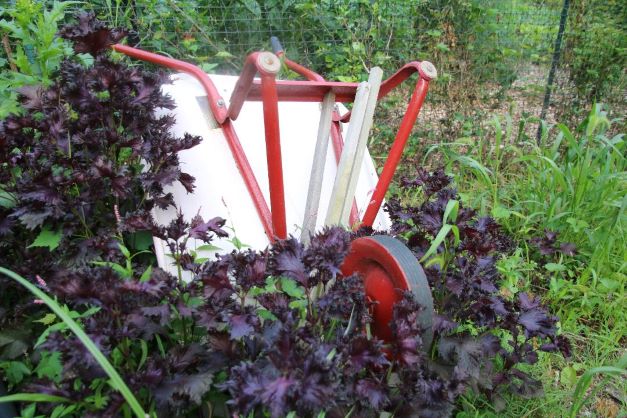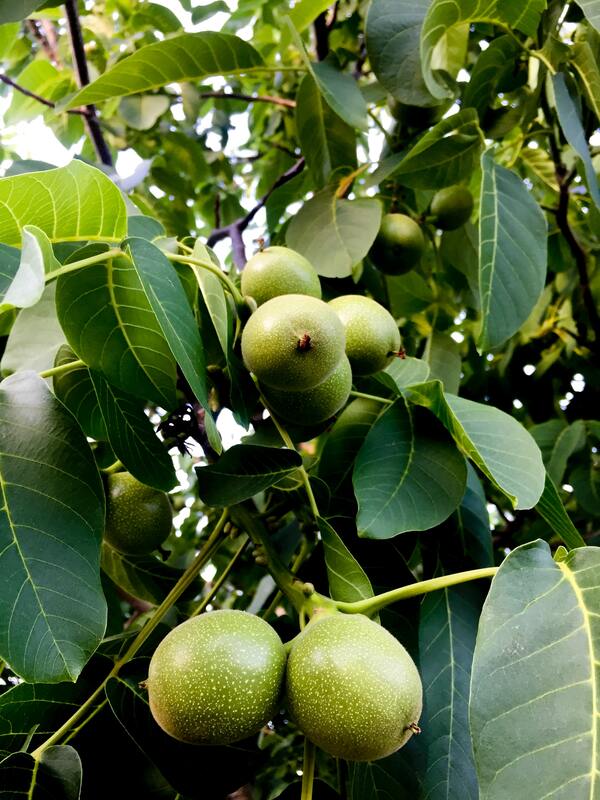Using the Internet to Match Plant to Place
|
Garden success requires matching plant to place. ‘Right plant, right place’ is the thoughtful gardener’s mantra. A successful garden will use the site’s natural four- season sun, soil and moisture to meet requirements. Extensive environmental engineering is likely to produce more frustration than satisfaction.
The internet can help identify plant cultural preferences, pests and pathogens. Searching reliable online plant databases can complement your gardening library. Online gardening classes are available too. The UConn Master Gardener Program course catalog is a good place to start. (uconnmastergardeners.gosignmeup.com/Public/Course/Browse). But not all online sites are reliable. The most reliable are in the .edu and .gov domains. The .org domain is usually used by non-profits. So, they may have an agenda that goes beyond objective education. The .com domain suggests a for profit perspective, so be wary. Begin your online search by typing site:.edu or site:.gov in front of your topic or question. This step produces a list of university or government reference materials at the top. Additionally, a site such as the University of California may offer highly reliable information, but may not be relevant to a Connecticut garden, given the climatic differences. |
A list of useful sites for Connecticut gardeners
Soil Testing:
Soil testing is part of Common Good Gardens best practices to ensure our plants have the best nutrients in order to yield the best crops.
UConn's Soil Nutrient Analysis Laboratory (SNAL) (soiltesting.cahnr.uconn.edu) has been serving the farmers, greenhouse growers and residents of Connecticut for over 70 years. SNAL provides an inexpensive means for both agricultural producers and home owners to test their soil fertility and receive environmentally sound limestone and fertilizer recommendations. Through analyses as well as outreach efforts, clients and the public are informed about wise soil management and fertility practices.
UConn's Soil Nutrient Analysis Laboratory (SNAL) (soiltesting.cahnr.uconn.edu) has been serving the farmers, greenhouse growers and residents of Connecticut for over 70 years. SNAL provides an inexpensive means for both agricultural producers and home owners to test their soil fertility and receive environmentally sound limestone and fertilizer recommendations. Through analyses as well as outreach efforts, clients and the public are informed about wise soil management and fertility practices.
Pollinators:
Common Good Gardens is a proud participant in the Old Saybrook Pollinator Pathway program.
The Old Saybrook Pollinator Pathway (pollinator-pathway.org/towns/Old-Saybrook) is part of a Connecticut wide initiative to establish pollinator-friendly habitats and food sources for bees, butterflies, hummingbirds and other pollinating insects and wildlife. There are many pollinator related resources available on the site.
The Pollinator Pathway in CT (pollinator-pathway.org/towns-1/Connecticut) is part of a nation wide initiative to establish pollinator-friendly habitats and food sources for pollinating insects and wildlife. CT towns pollinator websites are included..
The Connecticut Agricultural Experiment Station (CAES) pollinator site mainly discusses the issues of bees, as they are the most important pollinators of crops in our state and are the focus of recent concerns. (portal.ct.gov/CAES/Publications/Publications/Pollinator-Information)
The Connecticut Agricultural Experiment Station (CAES) is responsible for the state honey bee registration and inspection program and also has an active research and public information on plants that are used as sources of nectar and pollen by bees.
(portal.ct.gov/CAES/Inspection/Inspection/Inspections-and-Registrations#Beekeeper)
The Old Saybrook Pollinator Pathway (pollinator-pathway.org/towns/Old-Saybrook) is part of a Connecticut wide initiative to establish pollinator-friendly habitats and food sources for bees, butterflies, hummingbirds and other pollinating insects and wildlife. There are many pollinator related resources available on the site.
The Pollinator Pathway in CT (pollinator-pathway.org/towns-1/Connecticut) is part of a nation wide initiative to establish pollinator-friendly habitats and food sources for pollinating insects and wildlife. CT towns pollinator websites are included..
The Connecticut Agricultural Experiment Station (CAES) pollinator site mainly discusses the issues of bees, as they are the most important pollinators of crops in our state and are the focus of recent concerns. (portal.ct.gov/CAES/Publications/Publications/Pollinator-Information)
The Connecticut Agricultural Experiment Station (CAES) is responsible for the state honey bee registration and inspection program and also has an active research and public information on plants that are used as sources of nectar and pollen by bees.
(portal.ct.gov/CAES/Inspection/Inspection/Inspections-and-Registrations#Beekeeper)
Plant Identification and Invasive Plants:
The UCONN College of Agriculture plant data base (hort.uconn.edu) is useful for identification of woody landscape plants. The site includes information about their ornamental attributes and uses.
The Connecticut Botanical Society’s site (ct-botanical-society.org) offers a wealth of knowledge about the state’s flora compiled by botanists. Activities include guided field trips, access to a dried plant library (herbarium) with over 36,000 plants among others. The authoritative Society collaborates with Yale and Connecticut College to celebrate the State’s rich natural heritage.
UConn’s Connecticut Native Plant Initiative (nenativeplants.psla.uconn.edu/native-plants) explores the definition, production, distribution and public awareness of Connecticut and New England region native plants.
The Bringing Nature Home site (bringingnaturehome.net)is inspired by the text of the same name by Douglas W. Tallamy. Its focus is on how landowners can use native plants to sustain wildlife and why this is a very good idea.
The UConn Home & Garden Center site (ladybug.uconn.edu) is a rich horticultural informational resource. The Center’s authoritative fact sheets are particularly useful. The Center also offers access to UConn’s Soil Nutrient Analysis and Plant Diagnostic labs. UConn soil tests require a small fee.
UConn’s integrated plant management (IPM) site (ipm.cahnr.uconn.edu) offers accessible research-based information on how to manage plant pests and pathogens. The Vegetable fact sheets are particularly informative.
The Connecticut Agricultural Experiment Station (CAES) site (portal.ct.gov/caes) provides access to a very wide array of useful gardening information. The site also includes guidelines for accessing their no-fee soil testing service. This extensive site is worth exploring.
The Cornell University site (turfweeds.cals.cornell.edu) offers a helpful turf and landscape weed identification guide. Turf weeds can be tough to manage!
The Connecticut Invasive Plant working Group (cipwg.uconn.edu) is a group of organizations and individuals concerned with the proliferation of invasive species in Connecticut. Their site offers access to useful information about the invasive species in our landscape and includes management suggestions.
CIPWG Connecticut Invasive Plant Management Calendar (cipwg.uconn.edu/wp-content/uploads/sites/244/2020/12/CIPWG-2018-Invasive-Plant-Management-Calendar.pdf) created by Emmett Varricchio and members of the CIPWG, it is a useful tool in developing a plan to manage invasive species.
CT Department of Energy & UConn Guidelines for Disposal of Terrestrial Invasive Plants (cipwg.uconn.edu/wp-content/uploads/sites/244/2022/05/Invasive-Terrestrial-Plant-Disposal.pdf) focuses on the proper disposal of invasive plant materials, soil, and sediment after control measures have occurred.
The Connecticut Forest and Park Association site provides useful invasive plant ‘flashcards’ are available on the Connecticut Forest and Park Association site. (cfpa22.wpengine.com/wp-content/uploads/2022/10/Invasives-Flashcards-With-Logo-Printable.pdf).
The Connecticut Botanical Society’s site (ct-botanical-society.org) offers a wealth of knowledge about the state’s flora compiled by botanists. Activities include guided field trips, access to a dried plant library (herbarium) with over 36,000 plants among others. The authoritative Society collaborates with Yale and Connecticut College to celebrate the State’s rich natural heritage.
UConn’s Connecticut Native Plant Initiative (nenativeplants.psla.uconn.edu/native-plants) explores the definition, production, distribution and public awareness of Connecticut and New England region native plants.
The Bringing Nature Home site (bringingnaturehome.net)is inspired by the text of the same name by Douglas W. Tallamy. Its focus is on how landowners can use native plants to sustain wildlife and why this is a very good idea.
The UConn Home & Garden Center site (ladybug.uconn.edu) is a rich horticultural informational resource. The Center’s authoritative fact sheets are particularly useful. The Center also offers access to UConn’s Soil Nutrient Analysis and Plant Diagnostic labs. UConn soil tests require a small fee.
UConn’s integrated plant management (IPM) site (ipm.cahnr.uconn.edu) offers accessible research-based information on how to manage plant pests and pathogens. The Vegetable fact sheets are particularly informative.
The Connecticut Agricultural Experiment Station (CAES) site (portal.ct.gov/caes) provides access to a very wide array of useful gardening information. The site also includes guidelines for accessing their no-fee soil testing service. This extensive site is worth exploring.
The Cornell University site (turfweeds.cals.cornell.edu) offers a helpful turf and landscape weed identification guide. Turf weeds can be tough to manage!
The Connecticut Invasive Plant working Group (cipwg.uconn.edu) is a group of organizations and individuals concerned with the proliferation of invasive species in Connecticut. Their site offers access to useful information about the invasive species in our landscape and includes management suggestions.
CIPWG Connecticut Invasive Plant Management Calendar (cipwg.uconn.edu/wp-content/uploads/sites/244/2020/12/CIPWG-2018-Invasive-Plant-Management-Calendar.pdf) created by Emmett Varricchio and members of the CIPWG, it is a useful tool in developing a plan to manage invasive species.
CT Department of Energy & UConn Guidelines for Disposal of Terrestrial Invasive Plants (cipwg.uconn.edu/wp-content/uploads/sites/244/2022/05/Invasive-Terrestrial-Plant-Disposal.pdf) focuses on the proper disposal of invasive plant materials, soil, and sediment after control measures have occurred.
The Connecticut Forest and Park Association site provides useful invasive plant ‘flashcards’ are available on the Connecticut Forest and Park Association site. (cfpa22.wpengine.com/wp-content/uploads/2022/10/Invasives-Flashcards-With-Logo-Printable.pdf).
Plant Diseases and Pests:
CAES Alerts & Updates help Connecticut gardeners stay current with challenging diseases and conditions. (portal.ct.gov/CAES/PDIO/Alerts/Whats-New).
The Connecticut Agriculture Experiment Station (CAES) Plant Pest Handbook Index (portal.ct.gov/CAES/Plant-Pest-Handbook/pph-Introductory/Plant-Pest-Handbook-Index) is alphabetically arranged to provide a quick start to plant problem diagnosis.
The UMass Vegetable Notes free newsletter is another timely pest and pathogen information source. It is published weekly during the growing season. While it reports on conditions further north, it is informative and can provide Connecticut gardeners with early warning. (ag.umass.edu/vegetable/vegetable-notes/subscribe)
The UMass Landscape Message is another gardening planning and monitoring resource (ag.umass.edu/landscape/landscape-message). Scouts in Massachusetts compile and record data to support monitoring pest and plant development. This can help support IPM activities in Connecticut gardens.
Cornell University offers gardeners many authoritative sites. The Vegetable MD online site and the disease fact sheets are very useful & informative. (vegetablemdonline.ppath.cornell.edu/)(cals.cornell.edu/insect-diagnostic-laboratory/factsheets)
The Connecticut Agriculture Experiment Station (CAES) Plant Pest Handbook Index (portal.ct.gov/CAES/Plant-Pest-Handbook/pph-Introductory/Plant-Pest-Handbook-Index) is alphabetically arranged to provide a quick start to plant problem diagnosis.
The UMass Vegetable Notes free newsletter is another timely pest and pathogen information source. It is published weekly during the growing season. While it reports on conditions further north, it is informative and can provide Connecticut gardeners with early warning. (ag.umass.edu/vegetable/vegetable-notes/subscribe)
The UMass Landscape Message is another gardening planning and monitoring resource (ag.umass.edu/landscape/landscape-message). Scouts in Massachusetts compile and record data to support monitoring pest and plant development. This can help support IPM activities in Connecticut gardens.
Cornell University offers gardeners many authoritative sites. The Vegetable MD online site and the disease fact sheets are very useful & informative. (vegetablemdonline.ppath.cornell.edu/)(cals.cornell.edu/insect-diagnostic-laboratory/factsheets)
Gardening Classes:
The CT Master Gardener course catalog is available on this site (uconnmastergardeners.gosignmeup.com/Public/Course/Browse). Master Garden Classes are offered through the UConn Extension Master Gardener Program. These classes provide continuing education for Certified Master Gardeners as part of the Advanced Master Gardener certification process and are also available to the public.
Books for Master Gardeners:
MARSHALL, INSECTS: THEIR NATURAL HISTORY & DIVERSITY
A bit of a doorstop and not cheap (I bought mine used for $50) but the best insect key and matching photos of any book I’ve seen.
SYMONDS AND CHELMINSKI, THE TREE IDENTIFICATION BOOK
Not a true dichotomous key but a great resource for rapid differentiation of plants within like clusters. Tom and I worked our way through the Conn Coll Arboretum with this and the following book.
SYMONDS AND MERWIN, THE DENSHRUB IDENTIFICATION BOOK
Same approach as above but a little less useful given the more granular differentiation amongst many groups of shrubs.
WAGNER, CATERPILLARS OF EASTERN NORTH AMERICA
Comprehensive, easy to use photo guide
MAINE DEPT OF AGRICULTURE CONSERVANCY AND FORESTRY, FOREST TREES OF MAINE: BICENTENNIAL EDITION
With many overlaps between CT trees and Maine trees, this is an excellent guide to differentiation among species within a genus, e.g. Quercus, Acer
POSTAK, GILMAN AND CHILDS, PEST IDENTIFICATION GUIDE FOR WEEDS, INSECTS AND DISEASES OF WOODY ORNAMENTALS
A really useful photo guide, especially useful for quick weed identification. Published by U Mass bookstore and available only from them by phone. Expensive but worth it.
SIBLEY, THE SIBLEY GUIDE TO TREES
Probably in every MG’s library
WOJTECH, BARK (noun not verb!)
Ditto
HARLOW, FRUIT KEY AND TWIG KEY
Old and a bit clunky, but worth a look.
HAINES, FLORA NOVAE ANGLIAE: A MANUAL FOR THE IDENTIFICATION OF NATIVE AND NATURALIZED HIGHER VASCULAR PLANTS OF NEW ENGLAND
As you know this is a) the basis for the GO BOTANY dichotomous key b) a beast to use—but it is the bible.
A bit of a doorstop and not cheap (I bought mine used for $50) but the best insect key and matching photos of any book I’ve seen.
SYMONDS AND CHELMINSKI, THE TREE IDENTIFICATION BOOK
Not a true dichotomous key but a great resource for rapid differentiation of plants within like clusters. Tom and I worked our way through the Conn Coll Arboretum with this and the following book.
SYMONDS AND MERWIN, THE DENSHRUB IDENTIFICATION BOOK
Same approach as above but a little less useful given the more granular differentiation amongst many groups of shrubs.
WAGNER, CATERPILLARS OF EASTERN NORTH AMERICA
Comprehensive, easy to use photo guide
MAINE DEPT OF AGRICULTURE CONSERVANCY AND FORESTRY, FOREST TREES OF MAINE: BICENTENNIAL EDITION
With many overlaps between CT trees and Maine trees, this is an excellent guide to differentiation among species within a genus, e.g. Quercus, Acer
POSTAK, GILMAN AND CHILDS, PEST IDENTIFICATION GUIDE FOR WEEDS, INSECTS AND DISEASES OF WOODY ORNAMENTALS
A really useful photo guide, especially useful for quick weed identification. Published by U Mass bookstore and available only from them by phone. Expensive but worth it.
SIBLEY, THE SIBLEY GUIDE TO TREES
Probably in every MG’s library
WOJTECH, BARK (noun not verb!)
Ditto
HARLOW, FRUIT KEY AND TWIG KEY
Old and a bit clunky, but worth a look.
HAINES, FLORA NOVAE ANGLIAE: A MANUAL FOR THE IDENTIFICATION OF NATIVE AND NATURALIZED HIGHER VASCULAR PLANTS OF NEW ENGLAND
As you know this is a) the basis for the GO BOTANY dichotomous key b) a beast to use—but it is the bible.
Find us on Facebook, @CommonGoodGardensOS
